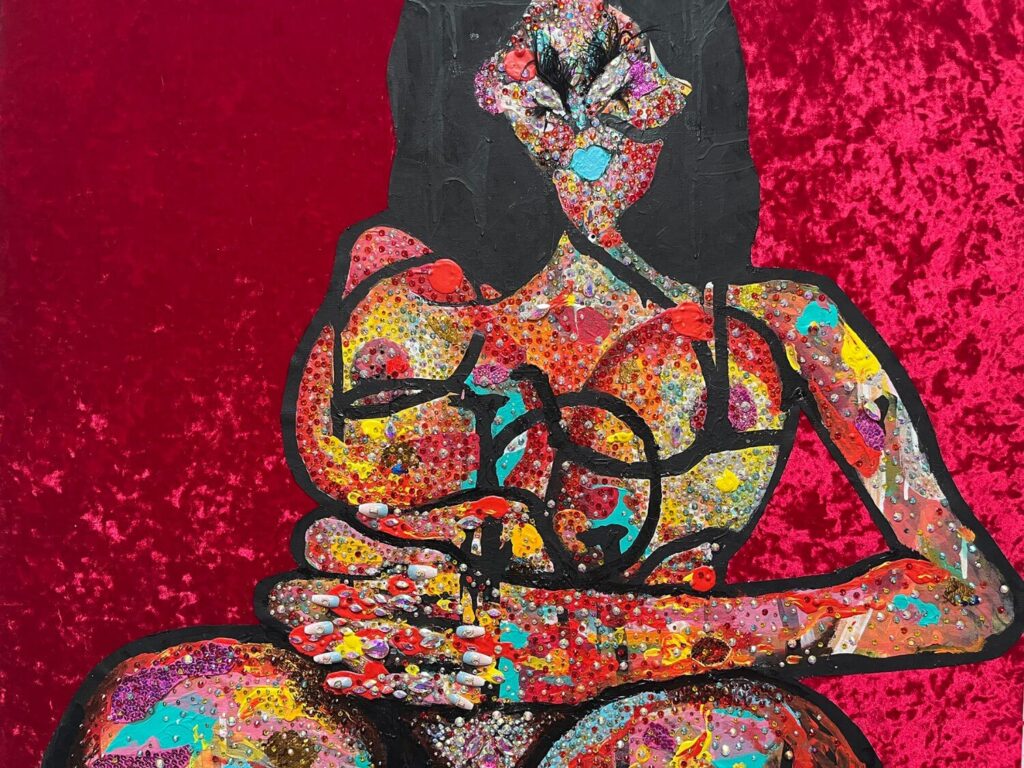The Hammer Museum’s sixth edition biennial “Made in LA” art exhibit highlights artists working throughout the greater LA area. The exhibit opened Oct. 1 and will run through Dec. 31, showcasing the work of 39 artists from a variety of backgrounds who work with a multitude of mediums.
Independent co-curator Diana Nawi said the process of curating the exhibit developed over time, as she visited 250 studios to find art for the exhibit.
“The thing with a show like this is you don’t know what you’re going to end up with,” Nawi said. “It’s very processed, so you have to let yourself be open to what you’re seeing as you explore the city and do all these studio visits.”
According to Nawi, the physical architectural model of the exhibit starts with sketches, which can be difficult because they do not know how much space an artist needs.
“You try and see a lot of artists, but LA is unique in that there are so many amazing artists and there’s so much talent here that 200 artists is barely scratching the surface,” Nawi said. “There are 39 artists in the show, and you need to rein in your scope and kind of decide what direction you’re going and start to think about that.”
According to Occidental art and art history professor Janna Ireland, LA art varies across mediums and subjects.
“[The art ranges] from things that are going on [the] news and things that are socially important right now, to work that is simply about beauty or about appreciation of warmth,” Ireland said.

Jackie Amézquita, one of the artists from the showcase, presented her work “El suelo que nos alimenta” which uses soil sourced from the 144 neighborhoods that make up LA County.
“I work with organic materials, and some of the things that I use in my work have to do with migration, adaptation, regeneration and liberation,” Amézquita said.
According to Amézquita, the process of making “El suelo que nos alimenta” was extremely time consuming, from sourcing the soil to traveling around the LA region and gathering rain for the soil.
Amézquita said the process was very similar to the experience of making tamales. Making tamales deals with a lot of eyeballing measurements and knowing the consistency of your masa, similar to the process of preparing the soil for the exhibit, according to Amézquita.
“I was looking for this firm mixture of the soil in the masa where I could later place into this 12×12 frame and then adapt the mixture to the frame,” Amézquita said. “After that, I would make the drawings on the slab.”
Amézquita said the inspiration behind her piece was the Latine immigrant community.
“They represent this invisible labor of the immigrant community, especially Latinos,” Amézquita said. “It was honoring these invisible gestures that are part of Los Angeles that help create and nurture the city.”
According to Amézquita, she wants her work to provoke the feeling of home for LA residents that came from the neighborhoods of the soil she sourced.
“I noticed that all these cracks on the slabs were merging with the drawings,” Amézquita said. “I felt like the cracks were also this moment of liberation, not just of the land but also of its people.”

Teresa Baker, another artist from the exhibit presented four abstract pieces made of artificial turf and yarn, drawing inspiration from her German-American, Mandan and Hidatsa cultural background.
“I ended up working with artificial turf about five years ago and found that it was a material that really answered a lot of my questions and solved a lot of the problems that I was dealing with in abstraction and it allowed me to work with shapes,” Baker said. “I can bring them into the world that I’m creating with my artwork and have them represent tradition and culture.”
Baker said she creates abstract art because it has always made sense to her, and it allows art to exist on its own while also relating to different parts of life and the human experience through an individual’s unique interpretations.
“At the same time, the end object is intended for the viewer to be challenged, to really think about what they’re seeing and hopefully they’re seeing something they haven’t seen before and it doesn’t give you all the answers,” Baker said. “And I love that about abstraction.”
According to Baker, the process of working on multiple pieces at once brought up questions about how each piece was related to each other, and how those pieces were related to the exhibition as a whole.
“In my work, you can really think a lot about our relationship to the artificial and natural world, to culture, to land, to the removal of people from their land. So, there’s a lot of avenues that I hope, more than anything, raise some questions with the viewers,” Baker said.
According to Nawi, curating the Made in LA exhibit was an incredibly rewarding opportunity because it was the culmination of the last 15 years of her work. She said she has high hopes for the exhibition.
“It’s very rare to be able to do a show of people from the city your people live in that their people live in,” Nawi said. “It’s a real privilege to get to work with so many artists and bring that to life together.”
Contact Karen Palacios Echeverria at palacioseche@oxy.edu
![]()



































